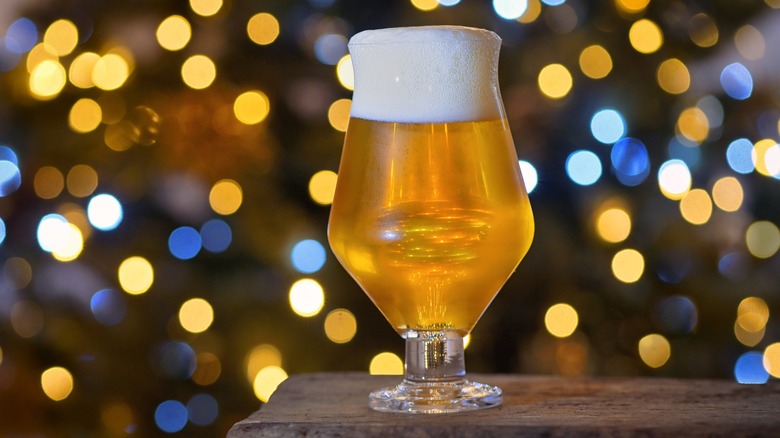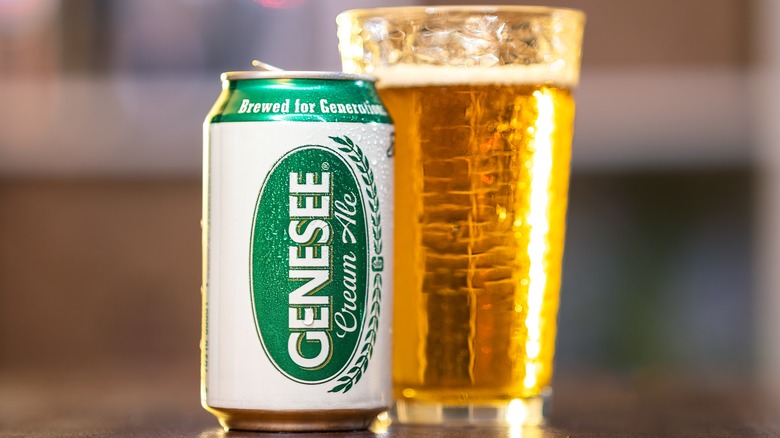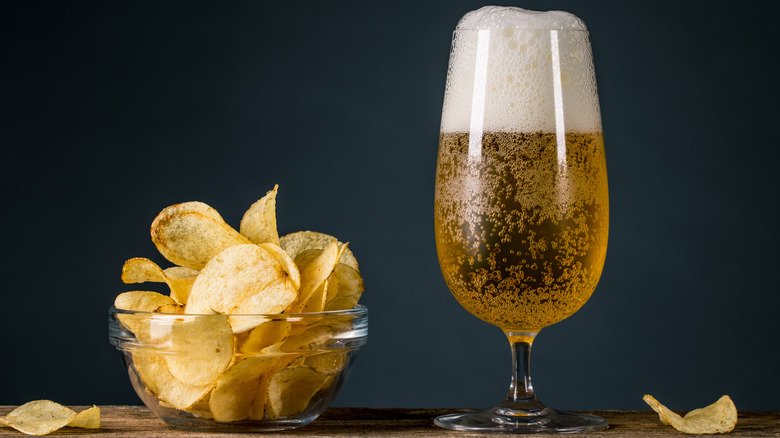Is There A Distinction Between Cream Ale And Blonde Ale?
The ubiquitous blonde ale and the somewhat confusingly named cream ale may look the same once poured into a pint glass. They share an inviting golden hue, incredibly light body — without coming off as watery — and are exceptionally crushable, both as a refreshment during a sweltering summer afternoon or as a coping mechanism come late fall when your NFL team is in the doldrums. However, the two are different, primarily due to the use of a specific grain adjunct in the former: Corn.
What these two beers also have in common, besides their color and easy-drinking nature, is that either ale or lager yeast can be used during fermentation. When pitching the latter, which only thrives in cold conditions, tanks should be kept below 60 degrees Fahrenheit to ensure a clean flavor profile. Anyone interested in taking their first steps into the world of craft beer who's intimidated by the bitterness of an IPA or the alcohol by volume content of, say, a wee heavy Scotch ale would do well to start their journey with a cream or blonde ale. Neither is tongue-stunningly offensive and ABVs tend to top out at 5.5%.
The cream ale is an American original
Despite its name, cream ale has not been dosed with dairy. In fact, cream ale is incredibly crisp, and one of the rare beer styles to have originated in America — the result of companies trying to win back drinkers who'd switched from darker, British-influenced ales to German-style lagers made popular by a Bavarian immigration boom. Breweries began experimenting with lighter beers to appeal to changing tastes, resulting in the crisp cream ale, which has a lighter body thanks to the substitution of barley for corn or even rice. According to the Beer Judge Certification Program, a nonprofit organization that sanctions adjudicators for prestigious competitions, cream ale's grain bill can include up to 20% of flaked maize as well as malt. No more than 20% of glucose is also permitted during the boil.
Genesee Brewery, located in Rochester, New York, makes a classic cream ale that at one point might've been stocked in your dad or grandpa's fridge. Released in 1960, the beer racked up two gold medals at the Great American Beer Festival, became one of the top-selling brews in the country during the '70s and '80s, and remains available to this day. A different take on the style can be found in Pacific City, Oregon, a tiny coastal town whose population swells each summer thanks to tourists making the trek to Pelican Brewing's original beachside pub. Kiwanda Ale, named after the area's massive sandstone headland, employs flaked barley instead of corn.
Blonde ales are a crowd-pleasing brewery staple
The rise of the modern blonde ale (sometimes referred to as golden ale) coincides with the proliferation of craft breweries in the '80s and '90s. It was a time when consumers were starting to sip beyond their comfort zone (aka "fizzy, yellow, mass-produced lagers"), however, many still wanted an easy-drinking option — a beer they could down over several hours. And since producing a lager takes more time and tank space, breweries with limited resources found they could easily turnaround a batch of blonde (fermentation should take approximately one week) that would appeal to both beer nerds and die-hard Budweiser fans. These ales are traditionally made with malt, however, some wheat may be present, as described in BJCP guidelines. Expect more of a biscuity flavor instead of the whisper of corn sweetness often characteristic of a cream ale.
You're almost certain to find a blonde ale at nearly any brewery you happen to stumble into, so it's easy enough to simply ask your bartender for a sample and go from there. However, you can't go wrong with Firestone Walker's 805 California Blonde, named after the company's area code. It's a beer as well suited for sunbathing on Ventura Beach as it is for mowing the lawn. And if you happen to be searching for a beer pairing for a summer barbecue, blondes pair perfectly with grilled meats, cutting through their richness.


